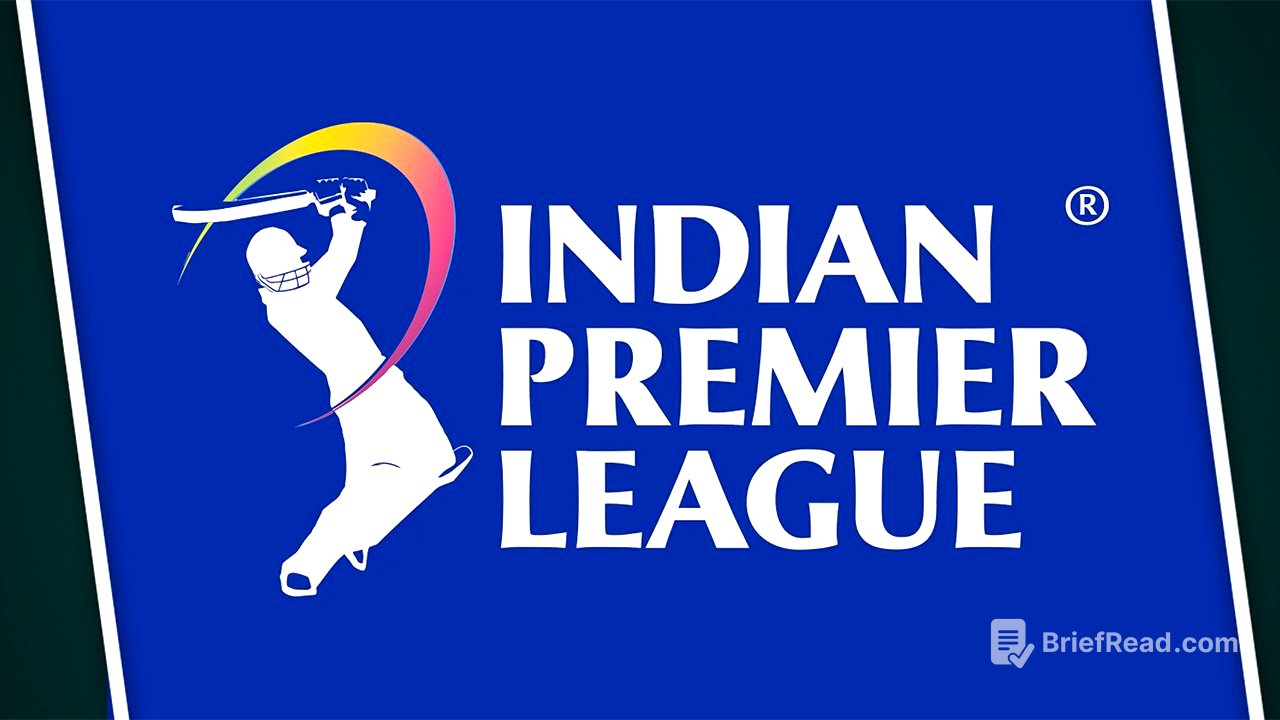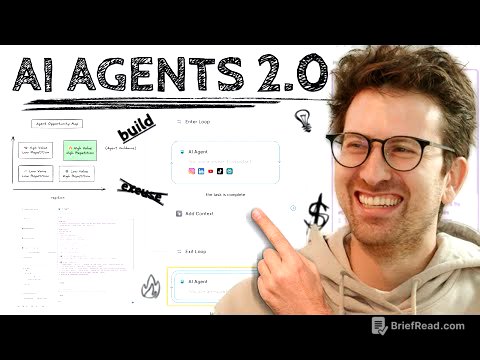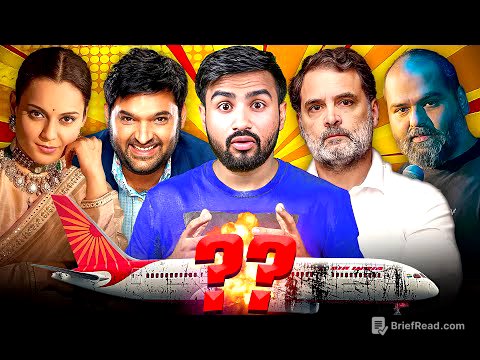TLDR;
This episode of Acquired covers the story of the Indian Premier League (IPL), a cricket league that has become a major sports and entertainment phenomenon. It explores the league's origins, its rapid growth, and the unique business model that has made it the second most valuable sports league in the world on a per-match basis. The hosts discuss the key figures involved, the controversies that have shaped the league, and the factors that could determine its future success.
- The IPL is a case study in creating a successful sports league from scratch, blending capitalism and religion.
- Lalit Modi's vision and entrepreneurial drive were crucial in establishing the IPL.
- The league's success is tied to the rise of the Indian middle class and the increasing penetration of television and smartphones.
- The IPL's unique auction system and focus on entertainment have helped it attract a diverse audience.
- The league faces challenges related to governance, corruption, and competition from other sports leagues.
Introduction [0:00]
The hosts express their initial skepticism about cricket but acknowledge the IPL's impressive growth and unique approach to sports entertainment. They highlight the league's blend of capitalism, religion, and Bollywood glamour, as well as the controversies and palace intrigue that have surrounded its history. The hosts tease the possibility of the IPL becoming the largest sports league in the world, surpassing even the NFL.
Lalit Modi and the Early Days of Sports Media in India [6:36]
The story begins in the early 1990s with Lalit Modi, the son of a wealthy Indian industrialist. Inspired by the sports culture in the United States, Modi sought to bring sports media to India, where television was just starting to become popular. He partnered with Disney to distribute content through local cable operators, leveraging his family's existing sales network for tobacco products.
Rupert Murdoch and the Rise of Cricket Broadcasting [10:53]
Rupert Murdoch's News Corp entered the Indian market with the Star channel, recognizing cricket as the most important sport to broadcast. Murdoch acquired the rights to Indian national cricket relatively cheaply, as the Indian cricket board (BCCI) did not fully realize the value of these rights. Modi, seeing the potential, partnered with ESPN to bid for the rights, leading to a merger between Star and ESPN.
The BCCI and the Discovery of Cricket's Value [15:12]
The BCCI's realization of the value of cricket broadcasting rights came about when the South African cricket board offered to pay $200,000 for the rights to broadcast a tour in India. This led to a legal battle that solidified the BCCI's ownership of the rights and its ability to sell them to anyone. The BCCI also introduced central contracts for Indian players, establishing its control over the sport.
Lalit's Ousting and the Revenge Plan [19:31]
After the merger of Star and ESPN, Lalit Modi was ousted from the business due to allegations of underreporting revenues and accepting kickbacks. Modi, feeling betrayed by Rupert Murdoch, embarked on a mission to take revenge by undermining Murdoch's sports empire in India. He aimed to gain control of the BCCI and revolutionize cricket broadcasting.
Modi's Ascent to the BCCI [23:36]
To gain influence over Indian cricket, Modi joined the Rajasthan state cricket board and eventually became its president. He then launched a campaign to convince the BCCI that it was undervaluing the television rights to international cricket. Despite his past involvement in buying those rights cheaply, Modi argued that they were worth far more and that the BCCI should be maximizing its revenue.
Commercializing the BCCI [26:40]
Once appointed to the BCCI, Modi wasted no time in transforming the organization into a commercial powerhouse. He renegotiated the team sponsorship deal with Sahara Group, increasing it from $100,000 to $15 million per year. He also secured a $52 million per year kit sponsorship deal with Nike, making it the highest-paid jersey logo deal in the world at the time.
Confronting Rupert Murdoch [41:57]
Modi set up a personal meeting with Rupert Murdoch and informed him that Star's contract for Indian international cricket was terminated. He mandated a minimum bid of $500 million for four years, a tenfold increase over the current value. Murdoch was outraged, but Modi had a plan to create a new sports network to bid on the rights, ultimately awarding them to Nimbus for $620 million.
The Genesis of the Indian Premier League (IPL) [46:52]
Having successfully extracted revenge on Rupert Murdoch and transformed the BCCI into an economic powerhouse, Modi set his sights on creating a domestic city-based cricket league: the Indian Premier League (IPL). He envisioned a league that would combine the best elements of the NFL, the English Premier League, the NBA, and international cricket, leveraging the BCCI's control over the sport.
The Opportunity: T20 Cricket [50:03]
The IPL's creation coincided with the emergence of T20 cricket, a shorter, more exciting format of the game that was gaining popularity in England. T20's fast-paced, three-hour matches were perfect for prime-time television, making cricket accessible to a wider audience. The format was initially mocked by traditional cricket fans, which only added to its appeal.
The Indian Cricket League (ICL) and the BCCI's Response [57:10]
Before the IPL could launch, a rebel league called the Indian Cricket League (ICL) emerged, backed by the broadcaster ZTV. The BCCI responded by banning any players who signed with the ICL from participating in Indian national cricket or domestic tournaments. This effectively crippled the ICL and paved the way for the IPL's dominance.
India Wins the T20 World Cup [1:04:39]
In 2007, India unexpectedly won the first T20 World Cup, further fueling the excitement around the format. Modi seized the opportunity, promising a Porsche 911 to any Indian player who hit six sixes in an over. Yuvraj Singh achieved this feat, and the Indian team went on to win the tournament, creating a perfect storm of media attention and national pride that set the stage for the IPL's launch.
Designing the Perfect Sports League [1:13:44]
The IPL was designed to maximize both the quality of play and the uncertainty of the outcome. The BCCI's control over player contracts ensured access to the best talent, while a unique auction system promoted competitive balance among the teams. The league also focused on attracting a diverse ownership group, including Bollywood stars, to broaden its appeal.
Stadiums, Media Rights, and Central Sponsorships [1:19:02]
To ensure the financial stability of the franchises, the IPL adopted an asset-light business model, with the BCCI owning and controlling the stadiums. The league also negotiated media rights deals and central sponsorships centrally, distributing the revenue equally among the teams. This created a level playing field and prevented wealthier teams from dominating the league.
Attracting Women Viewers and the Bollywood Connection [1:25:41]
Recognizing the need to attract women viewers to expand the advertising market, the IPL sought to compete with soap operas by creating a glamorous, entertaining product. This led to the involvement of Bollywood stars like Shah Rukh Khan and Preity Zinta, who became team owners and brought their star power to the league.
Securing the Media Rights Deal [1:39:59]
Despite initial resistance from Nimbus, the existing holder of the international cricket rights, Modi secured a $1 billion media rights deal with World Sports Group (WSG) and Sony. He structured the deal in a way that minimized the risk for WSG, allowing them to sublicense the Indian domestic broadcast rights to Sony while retaining the international rights.
The Franchise Auction and the Birth of the IPL [1:50:16]
With the media rights deal in place, the IPL launched its franchise auction, setting a minimum reserve price of $50 million per team. The auction was a resounding success, with the eight franchises selling for a total of $724 million. The Mumbai franchise, owned by Mukesh Ambani, fetched the highest price at $112 million.
The Player Auction and the Inaugural Season [1:54:39]
The IPL's unique player auction system further added to the league's excitement and competitive balance. The Rajasthan Royals, despite having the lowest salary, won the championship in the first year, demonstrating the importance of analytics and player evaluation. The inaugural season was a massive success, with high viewership numbers and a strong response from both male and female audiences.
The IPL's Early Success and the Rise of Lalit Modi [2:03:01]
The IPL's first season was a resounding success, exceeding all expectations and establishing the league as a major force in Indian sports and entertainment. However, the league's success also brought increased scrutiny and controversy, as Lalit Modi's actions began to attract the attention of his enemies.
The Fall of Lalit Modi [2:09:38]
In 2010, Lalit Modi was suspended from the BCCI on 22 charges, including bid rigging, accepting kickbacks, and betting on the league. Modi fled India and relocated to London, where he has remained ever since. In 2013, the BCCI banned him from Indian cricket for life.
The Spot-Fixing Scandal and the Supreme Court's Intervention [2:14:39]
In 2013, a spot-fixing scandal involving members of the Rajasthan Royals and Chennai Super Kings threatened to derail the IPL. The Indian Supreme Court intervened, forcing N. Srinivasan to step down from the BCCI and suspending the two teams involved. The court also instituted reforms to improve governance and transparency within the BCCI.
The IPL's Continued Growth and Global Expansion [2:18:08]
Despite the controversies and setbacks, the IPL continued to grow in popularity and value. In 2017, Star acquired the media rights for $2.5 billion, and in 2021, two new teams were sold for record prices. The league also attracted investment from global private equity firms like Redbird, signaling its growing international appeal.
The Reliance Jio Revolution and the Streaming Era [2:21:31]
The launch of Reliance Jio in 2016, which slashed the price of mobile data in India, led to a massive increase in smartphone adoption and streaming viewership. This further fueled the IPL's growth, making it a valuable asset for Disney, which acquired Star in 2017.
The 2022 Media Rights Auction and the Future of the IPL [2:32:15]
In 2022, the IPL's media rights were auctioned off again, fetching a combined $6.2 billion. Star re-upped on the TV rights, while Viacom18 acquired the digital rights. The loss of the digital rights was a major blow to Disney, highlighting the growing importance of streaming in the Indian market.
The IPL's Economic Impact and Valuation [2:42:57]
With annual revenue of $1.6 billion and a per-match revenue second only to the NFL, the IPL has become a major economic force in India. The league's teams are now valued at an average of $1 billion, making them attractive investments for both domestic and international investors.
Bull, Bear, and Mega-Bull Cases for the IPL [3:23:50]
The hosts discuss the potential for the IPL to continue its growth and become the largest sports league in the world. The bull case rests on the continued growth of the Indian middle class and the expansion of the advertising market. The bear case highlights the challenges of doing business in India and the potential for competition from other leagues. The mega-bull case envisions the IPL going global and attracting a massive international audience.
Power, Playbook, and Quintessence [3:58:57]
The hosts discuss the IPL's power, playbook, and quintessence. The IPL's power lies in its cornered resource of players, while its playbook involves maximizing value through auctions and creating a compelling entertainment product. The quintessence of the IPL is that it is the most perfect sports entertainment product that mankind has ever known.
Carveouts and Conclusion [4:22:22]
The hosts share their personal recommendations and thank their partners and sources. They conclude by emphasizing the IPL's incredible success story and its potential to continue growing in the years to come.









